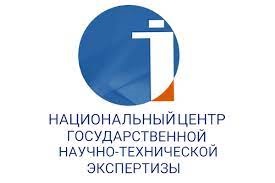Cross-linguistic Equivalence and Expressiveness of Proverbs
https://doi.org/10.55491/2411-6076-2025-2-64-74
Abstract
Proverbs are essential expressions that encapsulate folk wisdom, showcase the beauty of language and life, and enrich the spirit of the language. This paper discusses common and specific features of equivalent proverbs in Kazakh, English, Russian, and Uighur. A logical question arises: why were these languages chosen for analysis? In a globalized world, immigration is a significant trend in many countries, and Kazakhstan is no exception. Many English-and-Uighur speaking immigrants live in Kazakhstan today. Furthermore, Kazakhstan was part of the Soviet Union for 70 years and gained independence only in 1991, so, there are many Russians and people of other nationalities who speak Russian in the country. The scientific works of Mati Kuusi, G.Permyakov, E.Kokare, N.Pazyak, A.V. Kunin, A.Qaidar, N.Issanbat, A.Nurmakhanov served as the methodological basis for this research on proverbs. A comparative and semantic analysis were conducted in the research to define similarities and differences of proverbs. This paper will contribute both theoretically and practically. The findings of this research can be applied theoretically in further studies on cultural linguistics, literature and folklore. Additionally, students and immigrants can compare and contrast proverbs and practically apply them to various linguistic contexts and use the findings in academic research and publication activities. Due to the comparative study of Kazakh, English, Russian, and Uighur proverbs, we argue that Kazakh, Russian and Uighur proverbs are partially or highly similar in their lexical composition and grammatical structure and coincide in their functional, semantic, and affectively expressive features. However, English proverbs differ in their grammatical structures, although their semantic content largely shares common features with these other languages.
About the Author
M. B. IbrayevaKazakhstan
Meruyert Ibrayeva, Candidate of Philological Sciences
Astana
References
1. Akkozin, M. (1990) Kazahskie poslovicy i pogovorki. Almaty: Qazaqstan, 288 s. [Akkozin, M. (1990) Kazakh proverbs and sayings. Almaty: Kazakhstan, 288 p.] (in Russian)
2. Alimbaev, M. (2010) Ezhelgi qypchaq antroponimderining tarihi-lingvistikalyq sipaty: filol. kand. … dis. Almaty. [Alimbayev, M. (2010) Historical and linguistic analysis of ancient Kipchak antroponims: Philol. sci. cand. ... dis. Almaty.] (in Kazakh)
3. Erbotin, E. (1991) Dalaga sajahat: olengder, ertegıler, zhumbaqtar, zhangyltpashtar. Almaty: Zhalyn. [Yerbotin, Ye. (1991) Trip to the steppe: poetry, fairytales, riddles, tongue twisters. Almaty: Zhalyn.] (in Kazakh)
4. Gabdullin, M. (1958) Qazaq halqynyng auyz adebietı. Almaty: Mektep, 332 b. [Gabdullin, M. (1958) Oral folk arts of the Kazakhs. Almaty: Mektep, 332 p.] (in Kazakh)
5. Gayane, V. Hagopian (2008) Armenian Proverbs and Biblical Scriptures. Vol. 17. P. 43-78. (in English)
6. Kirisbaev, B. (1998) Zhangyltpashtar. Almaty: Balausa, 32 b. [Kirisbayev, B. (1998) Tongue twisters. Almaty: Balausa, 32 p.] (in Kazakh)
7. Kunin, A. (1984) Anglo-russkij frazeologicheskij slovar'. Moskva: Russkij jazyk, 944 s. [Kunin, A. (1984) English-Russian phraseological dictionary. Moscow: Russkiy yazyk, 944 p.] (in Russian)
8. Kurmangali, F.T., Mamayeva G.B., Beimbetova, A.A. (2024) National cultural connotation of regular expressions and national code in Kazakh and English languages. Bulletin of the Eurasian Humanities Institute. No1. P. 67-76. (in English)
9. Mugtasimova, G., Denmukhametova, E., Nasipov, I., Khaliullina, N. (2020) Paremiological parallels in the Turkic languages. Humanistic Practice in Education in a Postmodern Age. European Proceedings of Social and Behavioural Sciences. Vol. 93. P. 726-734. https://doi.org/10.15405/epsbs.2020.11.74 (in English)
10. Permjakov, G.V. (2001) Poslovicy i pogovorki narodov vostoka. Moscow: Labirint, 620 s. [Permyakov, G.V. (2001) Proverbs and sayings of the peoples of the East. Moscow: Labirint, 620 p.] (in Russian)
11. Qaidar, A. (2004) Halyq danalygy. Almaty: Toganai, 560 b. [Qaidar, A. (2004) Folk wisdom. Almaty: Toganai, 560 p.] (in Kazakh)
12. Qaliev, S. (1994) Qandai bolyp osemin. Almaty: Balausa, 320 b. [Qaliyev, S. (1994) What will I be when I grow up? Almaty: Balausa, 320 p.] (in Kazakh) «Qazaqstan Tarihy» portaly. http://e-history.kz/. (in Kazakh)
13. Qunanbaiuly, A. (1977) Tangdamaly shygarmalar. Eki tomdyq zhinagy. T. 2. Almaty: Gylym, 53 b. [Qunanbaiuly, A. (1977) Selected works. Two-volume collection. V. 2. Almaty: Gylym, 53 p.] (in Kazakh)
14. Sagyndyquly, B. (2005) Frazeologizmning sintaksistık qurylymy. Qazaqstandagy zhane onymen shektes aumaqtardagy innovacijalyq bilim beru men aleumettik-madeni sajasat: tazhiribe, maseleler men perspektivalar. Halyqaralyq gylymiteorijalyq konferencija materialdary. Astana: Eurazija gumanitarlyq instituty. 338-340-вв. [Sagyndykuly, B. (2005) Syntactic structure of phraseology. Innovative education and socio-cultural policy in Kazakhstan and adjacent territories: experience, problems and prospects. Materials of the International scientific-theoretical conference. Astana: Eurasian Humanitarian Institute, P. 338-340.] [in Kazakh]
15. Shiming, C. (1991) Uighur Practical Grammar. Urumqi: Xinjiang University Press. (in English)
16. Skeat, W.W. (1961) A concise etymological dictionary of the English language. Oxford: Clarendon Press, 500 p. (in English)
17. Sygai, A. (2005) Qazaq madenietı. Jenciklopedija. Almaty: Aruna, 153 b. [Sygai, A. (2005) Kazakh culture. Encyclopedia. Almaty: Aruna, 153 p.] (in Kazakh)
18. Temple, Jon G., Honeck, Richard P. (1999) Proverb Comprehension. The Primacy of Literal Meaning. Journal of Psycholinguistic Research. V. 28. P. 41-70. https://api.semanticscholar.org/CorpusID:142795640 (in English)
19. Torequlov, N. (1959) Naqyl sozder. Almaty: Zhazushy, 55 b. [Torequlov, N. (1959) Quotations. Almaty: Jazushy, 55 p.] (in Kazakh)
20. Turdieva, D.A. (2010) Gendernye otnoshenija vo frazeologicheskih sistemah francuzskogo i ujgurskogo jazykov: avtoref. … kand. dis. Almaty, 25 s. [Turdiyeva, D.A. (2010) Gender relations in phraseological systems of French and Uighur languages: Аbstract … Сand. Dis. Almaty, 25 p.] (in Russian)
21. Ualihanov, Sh. (1980) Tangdamaly shygarmalar zhinagy. Almaty: Zhazushy, 416 b. [Valikhanov, Sh. (1980) Selected works. Almaty: Zhazushy, 416 p.] (in Kazakh)
22. Wolfgang, M. (1997) Modern Paremiology in Retrospect and Prospect. P. 399-416. http://scholar.google.com (in English)
23. Wolfgang, M. (2004) Proverbs. A Handbook. Greenwood press, 304 p. (in English)
24. Wolfgang, M. (2012) Proverbs are never out of season. Popular wisdom in the modern age. International Folkloristics. Vol. 7. 284 p. (in English)
25. Yusuf, Y.K. (2004) Linguistic Resources of Euphemism. Journal of English Studies. Vol. 1. P. 1-18. Ibadan: University of Ibadan (in English)
Review
For citations:
Ibrayeva M.B. Cross-linguistic Equivalence and Expressiveness of Proverbs. Tiltanym. 2025;(2):64-74. https://doi.org/10.55491/2411-6076-2025-2-64-74

















